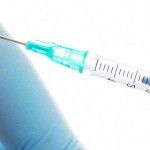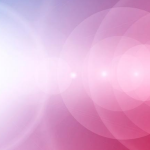From HRSA’s Federal Office of Rural Health Policy
What’s New
HRSA Rural Public Health Workforce Training Network Program – applications due March 18. HRSA anticipates awards for more than 30 community-based organizations that will join an effort to train and place public health professionals in rural and tribal areas. Eligible applicants include minority-serving institutions of higher education, Critical Access Hospitals, community health centers, nursing homes, Rural Health Clinics, substance use providers, and state or local workforce development boards. Each grantee will receive approximately $1.5 million for a three-year project. FORHP will hold a webinar for applicants on Wednesday, January 5 at 1:00 pm ET. For those unable to view online, see the Events section below for dial-in information.
HRSA Rural Residency Planning and Development (RRPD) Program – deadline extended until January 11. The Health Resources and Services Administration (HRSA) revised the program sustainability requirements and extended the deadline for RRPD grant applications. Applicants should review the changes and can resubmit their applications if needed. HRSA will only review your last submitted application. This program aims to increase opportunities for physicians to train in rural residencies. A total of $10.5 million will develop 14 new rural residency programs accredited by the Accreditation Council on Graduate Medical Education (ACGME). Eligible applicants include rural hospitals, GME consortiums, and tribal organizations. For questions, email RuralResidency@hrsa.gov.
HRSA Small Health Care Provider Quality Improvement Program Funding Opportunity – applications due March 21. HRSA will be making approximately 40 awards of up to $200,000 each to support the planning and implementation of quality improvement activities in rural communities. Applicants must be rural domestic public or private nonprofit entities with demonstrated experience serving, or the capacity to serve, rural underserved populations in a HRSA-designated rural area. FORHP will hold a technical assistance webinar for applicants via Zoom on Wednesday, January 26, 2022 from 2-3 p.m. ET. A recording will be available for those who cannot attend.
Share Your Experiences on Rural Emergency Preparedness and Response. The Rural Health Information Hub (RHIhub) wants to hear about how rural communities, health care facilities, public health departments, first responders, tribes, rural serving organizations, and others have had to adapt, collaborate, and innovate in the face of disasters and public health emergencies. They are looking for examples of lessons learned, successes, challenges, or other helpful information to highlight related to emergency preparedness, response, and recovery for a variety of disasters. Examples will be shared in an emergency preparedness toolkit on the RHIhub website.
Spread the Word About Vaccine Boosters. The U.S. Department of Health & Human Services released new resources – posters, flyers, videos, and talking points – to help promote the extra protection from COVID-19 boosters. All vaccinated adults aged 18+ are eligible for a booster. Search by zip code to find nearby locations providing adult and pediatric vaccines and boosters for COVID-19 and the flu at vaccines.gov.
Ongoing: HRSA Payment Program for RHC Buprenorphine-Trained Providers. In June 2021, HRSA launched an effort to improve access to substance use disorder treatment by paying for providers who are waivered to prescribe buprenorphine, a medication used to treat opioid use disorder. Rural Health Clinics (RHCs) still have the opportunity to apply for a $3,000 payment on behalf of each provider who trained to obtain the waiver necessary to prescribe buprenorphine after January 1, 2019. Approximately $1.5 million in program funding remains available for RHCs and will be paid on a first-come, first-served basis until funds are exhausted. Send questions to DATA2000WaiverPayments@hrsa.gov. There is ongoing availability of a free online course for waiver eligibility training from the American Osteopathic Academy of Addiction Medicine and the Providers Clinical Support System.
COVID-19 Resources
NARHC Assistance with Federal Programs for COVID-19 Testing, Vaccine Distribution, and Provider Relief Fund. The National Association of Rural Health Clinics (NARHC) has background information and guidelines in its collection of technical assistance webinars for all COVID-related programs designated for Rural Health Clinics.
Federal Office of Rural Health Policy Resources for COVID-19. A set of Frequently Asked Questions (FAQs) from our grantees and stakeholders.
Rural Health Clinic Vaccine Distribution (RHCVD) Program. Under the program, Medicare-certified RHCs will receive direct COVID-19 vaccines in addition to their normal jurisdictions’ weekly allocation. Contact RHCVaxDistribution@hrsa.gov for more information.
Community Toolkit for Addressing Health Misinformation. The new resource asks for participation from individuals, teachers, school administrators, librarians, faith leaders, and health care professionals to understand, identify, and stop the spread of misinformation. The toolkit includes common types of misinformation and a checklist to help evaluate the accuracy of health-related content.
Online Resource for Licensure of Health Professionals. As telehealth usage increased during the pandemic, FORHP funded new work with the Association of State and Provincial Psychology Boards to reduce the burden of multi-state licensure. The site provides up-to-date information on emergency regulation and licensing in each state for psychologists, occupational therapists, physical therapists assistants, and social workers.
HRSA COVID-19 Coverage Assistance Fund. HRSA will provide claims reimbursement at the national Medicare rate for eligible health care providers administering vaccines to underinsured individuals.
HHS Facts About COVID Care for the Uninsured. The U.S. Department of Health & Human Services (HHS) helps uninsured individuals find no-cost COVID-19 testing, treatment, and vaccines. The HRSA Uninsured Program provides claims reimbursement to health care providers generally at Medicare rates for testing, treating, and administering vaccines to uninsured individuals, including undocumented immigrants. There are at-a-glance fact sheets for providers and for patients in English and Spanish.
CDC COVID-19 Updates. The Centers for Disease Control and Prevention (CDC) provides daily updates and guidance, including a section specific to rural health care, COVID-19 Vaccination Trainings for new and experienced providers, and Tips for Talking with Patients about COVID-19 Vaccination.
HHS/DoD National Emergency Tele-Critical Care Network. A joint program of the U.S. Department of Health & Human Services (HHS) and the U.S. Department of Defense (DoD) is available at no cost to hospitals caring for COVID-19 patients and struggling with access to enough critical care physicians, nurses, respiratory therapists, and other specialized clinical experts. Teams of critical care clinicians are available to deliver virtual care through telemedicine platforms, such as an app on a mobile device. Hear from participating clinicians, and email to learn more and sign up.
Mobilizing Health Care Workforce via Telehealth. ProviderBridge.org was created by the Federation of State Medical Boards through the CARES Act and the FORHP-supported Licensure Portability Grant Program. The site provides up-to-date information on emergency regulation and licensing by state as well as a provider portal to connect volunteer health care professionals to state agencies and health care entities.
New: Reaching Farm Communities for Vaccine Confidence. The AgriSafe Network is a nonprofit organization that provides information and training on injury and disease related to agriculture. Their health professionals and educators created a social media toolkit that aims to provide clear messages about COVID-19 vaccination for agriculture, forestry, and fishing workers.
Funding and Opportunities
SAMHSA Grants for Rural Emergency Medical Services Training – February 14. The Substance Abuse and Mental Health Services Administration (SAMHSA) will make 27 awards of up to $200,000 each to recruit and train emergency medical services (EMS) personnel with a focus on mental and substance use disorders. Eligible applicants are rural EMS agencies operated by a local or tribal government and non-profit EMS agencies.
Policy Updates
Send questions to ruralpolicy@hrsa.gov.
Medicare Rule Adds 1,000 Physician Residency Slots and Other GME Policies. Last week, the Centers for Medicare & Medicaid Services (CMS) finalized several graduate medical education (GME) proposals that will enhance the health care workforce and fund additional medical residency positions in hospitals serving rural and underserved communities. This Fiscal Year 2022 Medicare Inpatient Hospital Payment Final Rule adds 1,000 new Medicare-funded residency positions prioritizing hospitals that serve areas with the greatest needs. It also allows new opportunities for rural teaching hospitals participating in an accredited rural training track to increase their full time equivalent (FTE) caps. The rule also allows hospitals beginning a new medical residency training program to reset their FTE caps and per-resident amounts under qualifying circumstances. Rural hospitals seeking a cap reset must start new residency training programs by December 2025. Finally, CMS seeks comments on alternative methods to prioritize additional FTE resident cap slots and the review process to determine eligibility for per resident amounts or FTE cap resets in specified situations.
CMS Suspends Enforcement of Vaccine Mandate While Court Ordered Injunctions Remain in Effect (pdf). This month, CMS issued a memo to State Survey Agency Directors indicating that the agency will not enforce the new rule stipulating vaccination for health care workers in certified Medicare/Medicaid providers and suppliers (including nursing facilities, hospitals, dialysis facilities and all other provider types covered by the rule). Health care facilities may voluntarily choose to comply with the Interim Final Rule at this time.
Learning Events and Technical Assistance
Assistance for Rural Public Health Workforce Funding Applications – Wednesday, January 5 at 1:00 pm ET. FORHP will hold a one-hour webinar via Zoom for those applying for the Rural Public Health Workforce Training Network Program. Applications are due March 18th for the grant that will invest $48 million to place newly trained public health professionals in rural areas. To dial in: 1-833-568-8864; Participant Code: 86083981. Contact RPHWTNP@hrsa.gov for more information or a recording of the webinar.
Resource of the Week
Federally Qualified Health Centers and the Health Center Program. This recently updated topic guide at the Rural Health Information Hub includes new FAQs on Medicare reimbursement for telehealth services, insight on financial and operational performances of health centers, and the differences between a Federally Qualified Health Center and a Rural Health Clinic.
Approaching Deadlines
Last Day for RHCs to Spend COVID-19 Testing Funds – December 31
Department of Labor Stand Down Grants for Veterans Services – December 31
USDA Guaranteed Loans for Rural Rental Housing – December 31
COVID-19 Extension for Medicare Graduate Medical Education (GME) Affiliation Agreement – January 1
Treasury Department New Markets Tax Credit Program – January 3
CDC Grants for New Investigators/Research for Interpersonal Violence Impacting Children/Youth – January 4
HRSA Family-to-Family Health Information Centers (F2F HICs) – January 5
NIHB/CDC Building Capacity for Tribal Infection Control – January 7
Nominations Sought for Indigenous Health Equity Committee – extended to January 7
NIH Research for AI/AN End-of-Life Care – January 8
Burroughs Wellcome Fund Seed Grants for Climate Change and Health – January 10
USDA Farm to School Grants – January 10
HHS Grants for Family Planning Services – January 11
HRSA Rural Residency Planning and Development (RRPD) Program – extended to January 11
HRSA Nurse Corps Loan Repayment Program – January 13
HRSA Nurse Faculty Loan Program – January 13
HRSA Rural Communities Opioid Response Program – Implementation – January 13
SAMHSA Grants for Rural Emergency Medical Services Training – February 14
CDC Research on Telehealth Strategies for PrEP and ART – January 18
Comments Requested: DEA Regulation of Telepharmacy Practice – January 18
NIH Researching Behavioral Risk Factors for Cancer in Rural Populations – January 18
Department of Labor YouthBuild Program – January 21
CDC Centers for Agricultural Safety and Health – January 24
ACL Empowering Communities for Chronic Disease Self-Management – January 25
ACL Empowering Communities to Deliver and Sustain Falls Prevention Programs – January 25
CDC Seeking Public Input on Work-Related Stress for Health Workers – Extended to January 25
HRSA Delta Region Rural Health Workforce Training Program – January 25
CDC Cancer Prevention and Control for State, Territorial, and Tribal Organizations – January 26
HRSA Access to HIV Services for Women and Children – January 28
HRSA Rural Health Network Development Planning Program – January 28
HHS COVID-19 and Health Equity Impact Fellowship – extended to January 31
HHS Technology Challenge for Racial Equity in Postpartum Care – January 31
HRSA Centers of Excellence for Training Minorities in Health Professions – January 31
SAMHSA-American Psychiatric Association Diversity Leadership Fellowship – January 31
HRSA Leadership Education in Adolescent Health – February 1
Indian Health Service Forensic Healthcare Services for Domestic Violence Prevention – February 2
Indian Health Service Substance Abuse and Suicide Prevention Program – February 2
Indian Health Service Zero Suicide Initiative – February 2
National Health Service Corps Loan Repayment Programs – Extended to February 3
CDC Research to Prevent Firearm-Related Violence and Injuries – February 4
RWJF Summer Health Professions Education Program for Underrepresented Minorities – February 5
HRSA Predoctoral Training in Public Health Dentistry and Dental Hygiene – February 7
SAMHSA Harm Reduction Program – February 7
VA Supportive Services for Veteran Families – February 7
USDA Farm and Food Worker Relief Grants – February 8
IHS Tribal Self-Governance Negotiation – February 10
IHS Tribal Self-Governance Planning – February 10
CDC Strengthening Infection Prevention – February 11
CDC Evaluating Substance Use Prevention Incorporating ACEs Prevention – February 22
HRSA Mobile Health Training – Nurse Education, Practice, Quality and Retention – February 22
USDA Rural eConnectivity Broadband Loan and Grant Program – February 22
Rural Communities Opioid Response Program-Behavioral Health Care Technical Assistance (RCORP-BHCTA) – March 9
HRSA Rural Public Health Workforce Training Network Program – March 18
HRSA Small Health Care Provider Quality Improvement Program – March 21
FCC/USAC Rural Health Care Connect Fund – April 1
FCC/USAC Telecommunications Program – April 1
USDA Local Food Purchase Assistance Program – April 5
Ongoing Opportunities
CFPB Rental Assistance Finder
HHS/DoD National Emergency Tele-Critical Care Network
Extended Public Comment Period for FCC’s COVID-19 Telehealth Program
FCC Emergency Broadband for Individuals and Households
FEMA COVID-19 Funeral Assistance
HRSA Payment Program for Buprenorphine-Trained Clinicians – Until Funds Run Out
AgriSafe Nurse Scholar Program – March 2022
AHRQ Health Services Research Demonstration and Dissemination Grants – September 2022
AHRQ Research to Improve Patient Transitions through HIT – December 2022
American Indian Public Health Resource Center Technical Assistance
ASA Rural Access to Anesthesia Care Scholarship
Burroughs Wellcome Fund Seed Grants for Climate Change and Health – Quarterly through August 2023
CDC Direct Assistance to State, Tribal, Local, and Territorial Health Agencies
CDC Training Pediatric Medical Providers to Recognize ACEs
Delta Region Community Health Systems Development Program
Department of Commerce American Rescue Plan Funding for Indigenous Communities – September 2022
Department of Commerce: Economic Development Assistance Programs
Department of Labor Dislocated Worker Grants
DRA Technical Assistance for Delta Region Community Health Systems Development
EPA Drinking Water State Revolving Fund
FEMA/SAMHSA Crisis Counseling Assistance and Training Program (CCP)
GPHC & RWJF: Rapid Cycle Research and Evaluation Grants for Cross-Sector Alignment
HRSA Technical Assistance for Look-Alike Initial Designation for the Health Center Program
Housing Assistance Council: Housing Loans for Low-Income Rural Communities
HUD Hospital Mortgage Insurance Program
IHS Tribal Forensic Healthcare Training
IHS/DOD Medical Supplies and Equipment for Tribes (Project TRANSAM)
NARHC Certified Rural Health Clinic Professional Course
NIH Project Talk Initiative Host Site Applications
NIH Dissemination and Implementation Research in Health – May 2022
NIH Practice-Based Research for Primary Care Suicide Prevention – June 2022
NIH Research – Alcohol and Other Substance Use – Various Dates Through August 2022
NIH Research: Intervening with Cancer Caregivers to Improve Patient Outcomes – September 8, 2022
NIH Research on Minority Health/Health Disparities – September 8, 2022
NIH Research on Palliative Care in Home/Community Settings – September 8, 2022
NIH Intervention Research to Improve Native American Health – Various Dates Until September 2023
NIH Researching the Role of Work in Health Disparities – Various Dates Until September 2024
NIH Special Interest Research – Pandemic Impact on Vulnerable Children and Youth – May 2024
Nominations for Federal Advisory Commission on HIV, Viral Hepatitis, and Sexually Transmitted Diseases
Nominations for National Advisory Committee on Migrant Health
Primary Care Development Corporation Community Investment Loans
Rural Graduate Medical Education Planning and Development
RWJF Investigator-Initiated Research to Build a Culture of Health
RWJF Pioneering Ideas Brief Proposals
SBA Guaranteed Loans for Small Business
Southeast Rural Community Assistance Loans
Tribal Grant Writing Training
USDA Community Facilities Program
USDA Community Food Projects Technical Assistance
USDA Drinking Water and Waste Disposal for Rural and Native Alaskan Villages
USDA Economic Impact Initiative Grants
USDA Emergency Community Water Assistance Grants
USDA Healthy Food Financing Initiative Technical Assistance
USDA Intermediary Relending Program
USDA Rural Business Development Grants
USDA Rural Business Investment Program
USDA Rural Energy Savings Program
USDA SEARCH – Special Evaluation Assistance for Rural Communities and Households (for Water/Waste Projects)
USDA Summer Food Program
USDA Technical Assistance for Healthy Food Financing Initiative
USDA Telecommunications Infrastructure Loans
USDA Funding for Rural Water and Waste Disposal Projects
USDOT Rural Opportunities to Use Transportation for Economic Success (R.O.U.T.E.S)
The Announcements from the Federal Office of Rural Health Policy are distributed weekly. To receive these updates, send an email with “Subscribe” in the subject line.

















